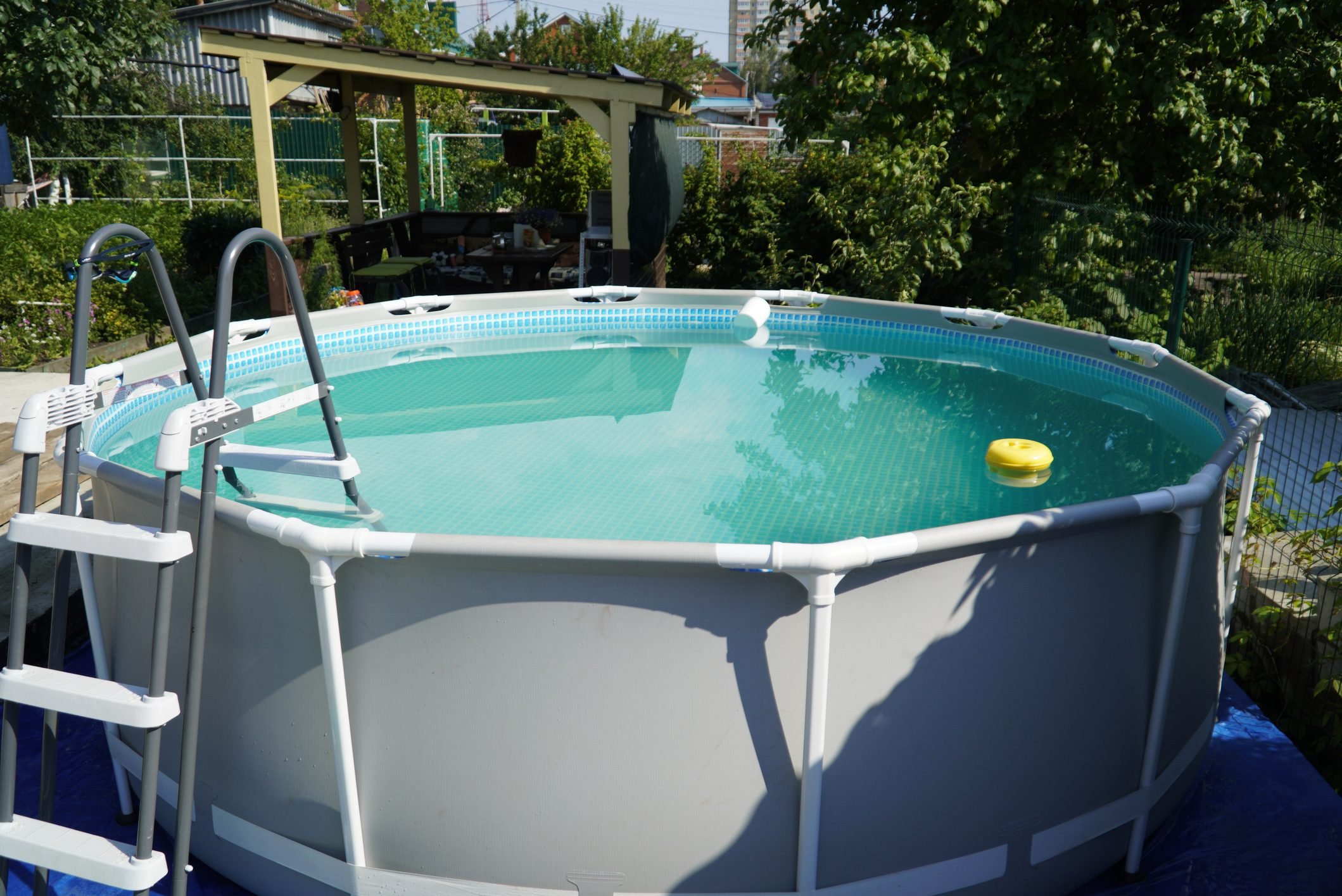If you disassemble your above-ground swimming pool, you'll need to drain it first. Here are the DIY steps and necessary tools for this task.

How To Drain an Above-Ground Pool

There are a few reasons to drain an above-ground pool. Maybe you’re taking it down for the winter, or upgrading to an in-ground pool. Maybe you’ve neglected the water (hey, it happens!) to the point where it’s beyond treatment and you need to thoroughly clean the pool and start over.
Whatever the reason, draining a pool is seldom as simple as pulling a plug, but it is something you can do yourself. Here’s how.
On This Page
Tools and Materials to Drain an Above-Ground Pool
Depending on the method (see below), here’s a short list of tools and materials you may need to drain an above-ground pool.
- Long garden hose: It needs to reach from the pool to whatever drainage point you’ve selected.
- Swimming pool cover pump: The same type of submersible pump that keeps water from collecting on a pool cover can also be used for draining. A submersible sump pump will work, too.
- Hose drain adapter: If your pool has a built-in drain valve, you’ll need a hose adapter to attach to it.
- Utility bucket: A standard bucket with a comfortable handle will come in handy for draining the last few inches of water. Make sure it’s not so big that it’s difficult to lift when filled. Remember, water weighs more than eight pounds per gallon.
- Shop vacuum: If you don’t want to scoop buckets of water, use a wet/dry shop vacuum to remove remaining water from the bottom of the pool.
- Swimsuit and sunscreen: It is a pool, after all.
How to Drain an Above-Ground Pool
Think it through
Before you pull the plug, plan out your steps. Here’s what to consider:
- In most climates, winterizing a pool requires a partial draining at most.
- If you’re doing a partial drain, remember that removing more than one-quarter of the water can cause the sides of the pool to collapse.
- For a complete pool draining for disassembly, plan to drain and take down the pool on the same weekend. Leaving an above-ground pool standing empty can damage it quickly.
- Before you let the water run into your garden, your main clean-out drain or a municipal drain, check with local authorities to make sure it’s permissible. Chlorinated and salt water can damage your lawn, the larger environment and the water supply. If draining is not allowed, call a pool professional.
Draining the pool
There are three ways to drain an above-ground pool:
With a pool cover pump: With a garden hose attached, set a submersible pool cover pump in the middle of the pool floor. Set the other end of the hose wherever you want water to drain. Then turn on the pump and begin draining. Don’t walk away — you need to ensure the pump is working correctly and water drains as it should. Once you get down to the last few inches, remove the pump and drain the rest with a bucket or shop vacuum. You can also do it as you’re disassembling the pool.
With a garden hose siphon: This is the original DIY drainage method! Submerge a long garden hose in the pool, making sure both ends are underwater. Keep pushing down sections of the hose until all the air bubbles come out and the hose fills with water. (You may have to get into the pool to do this.)
Place your finger or hand over one end of the hose and take it out of the pool. Don’t release it until you’re at a spot lower than the waterline. When you’ve reached that point, water should start draining. Once you get down to a few inches of water, drain the rest with a bucket or shop vacuum, or during pool disassembly.
Another option: Attach one end the hose to the water spigot and put the other end in the pool. Turn on the water and let the hose fill up. Then detach the hose from the spigot. The water should start draining.
With a garden hose and pool drain: If your pool has a built-in drain, your job is fairly easy. The pool probably came with a drain adapter to attach to a hose. If not, buy one from a pool supply store. Attach the adapter to the hose, open the drain cover on the outside of the pool (there may be a cover inside the pool as well, which you’ll have to open), insert the adapter and watch the water drain. Depending on the size of your pool, you may need a bucket or shop vac to drain the remaining few inches.
After the pool is drained
Dismantle the pool as soon as possible after the water is out.
- Detach any hoses and pumps.
- Clean the interior and exterior of the pool. For small pools, a spray cleaner is fine. For larger pools, use a mild soapy solution and a mop.
- Make sure the pool is dry.
- Disassemble and fold, following the manufacturer’s instructions.




















